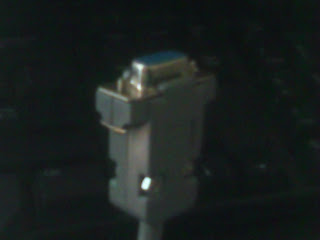
As already stated, the design features a 4-digit 7-segment LED display (with decimal points) plus an open-collector output. Depending on your application, this output can be used to operate a relay or sound a buzzer at the end of the timing period.
In addition, there are three inputs to the circuit: Reset, Start & Stop. The Reset input is a hardware reset to the microcontroller, while the Start & Stop input functions vary according to the firmware used.
All inputs are normally pulled high and may be pulled low by switches or relays, or by an open collector output (ie, when the transistor turns on).
Two on-board pushbutton switches are also connected across the Start & Stop inputs. These enable you to test the basic operation of the timer module without hooking up external hardware (apart from a power supply). Basically, they are there to help you get the unit "up and running".
To make the module easy to use, all the inputs and outputs are brought out to a single 10-way header pin. What's more, each input or output "pair" includes its own ground pin (see Fig.2).
Note that when using the output to switch a load, this load must be connected between the output pin on the PC board and a positive DC voltage. For example, to switch a 12V relay, connect the relay between the output pin and +12V.
Specifications :
Timing Range (Down Timer)-- 0-10,000 seconds; or 0-10,000 minutes;
or 0-10,000 hours
Timing Ranges (Photographic Timer)-- 60, 90, 120, 300, 600 & 900 seconds
Frequency Ranges (Frequency Meter)-- 0-10kHz & 10-40kHz (TTL logic)
Inputs-- Start, Stop and Reset (active low)
Output-- open collector NPN transistor, 100mA @ 30V
Power Supply-- 9-12V DC @ 50mA
Display-- 4-digit 7-segment LED with decimal point
Dimensions-- 51 x 66mm
External Connector-- 10-way right-angle SIL header (male or female)

 NOTE: ALL OF DATA OR METERIAL ON THIS BLOG IS JUST ONLY FOR STUDYING OR LEARNING PURPOSE ONLY,
NOTE: ALL OF DATA OR METERIAL ON THIS BLOG IS JUST ONLY FOR STUDYING OR LEARNING PURPOSE ONLY,

































 Gone are the days when we can afford to luxuriate under a hot shower for hours on end. Well, maybe the showers weren’t quite that long but most people are used to taking showers in the tens of minutes.
Gone are the days when we can afford to luxuriate under a hot shower for hours on end. Well, maybe the showers weren’t quite that long but most people are used to taking showers in the tens of minutes.

























